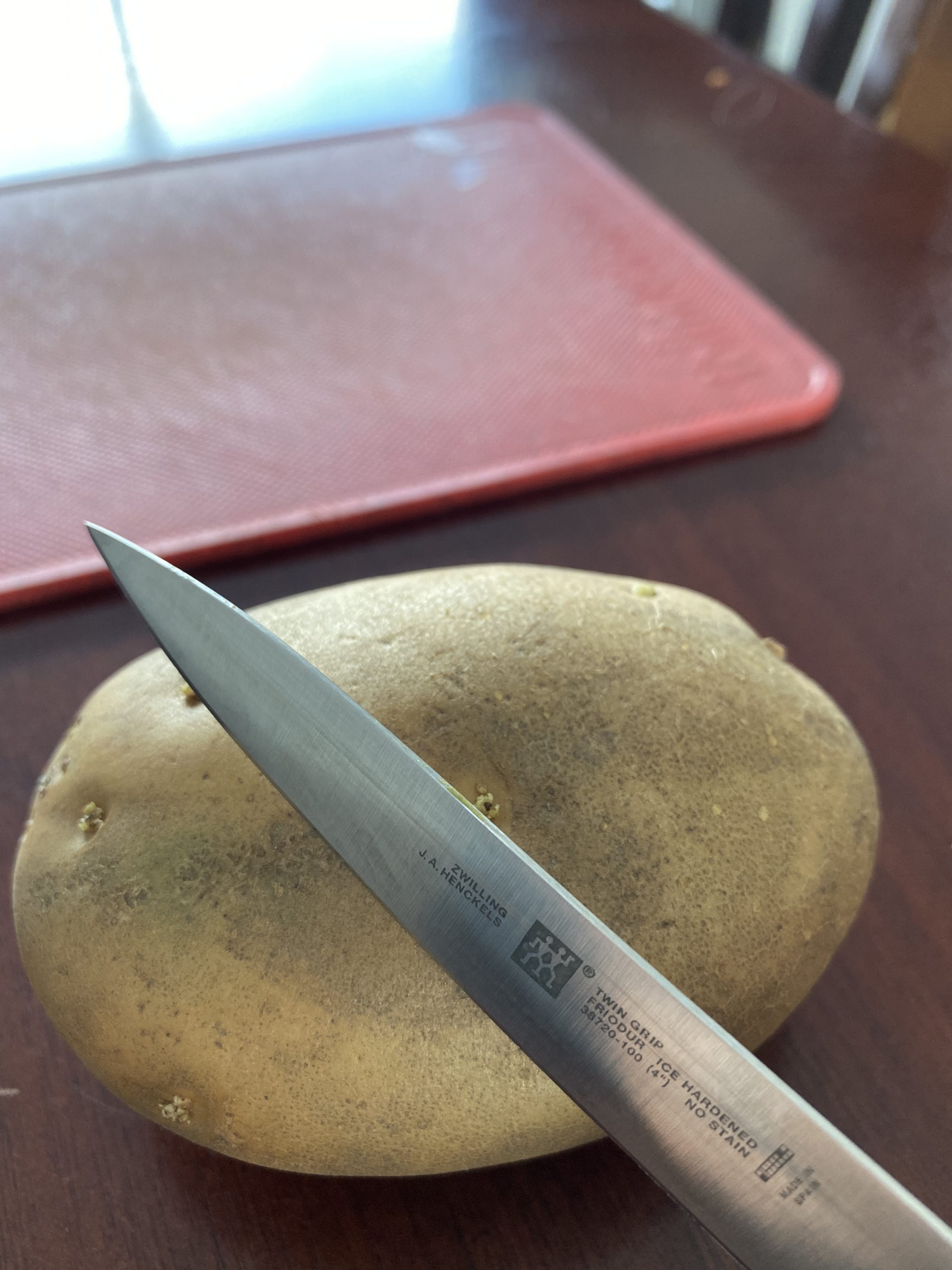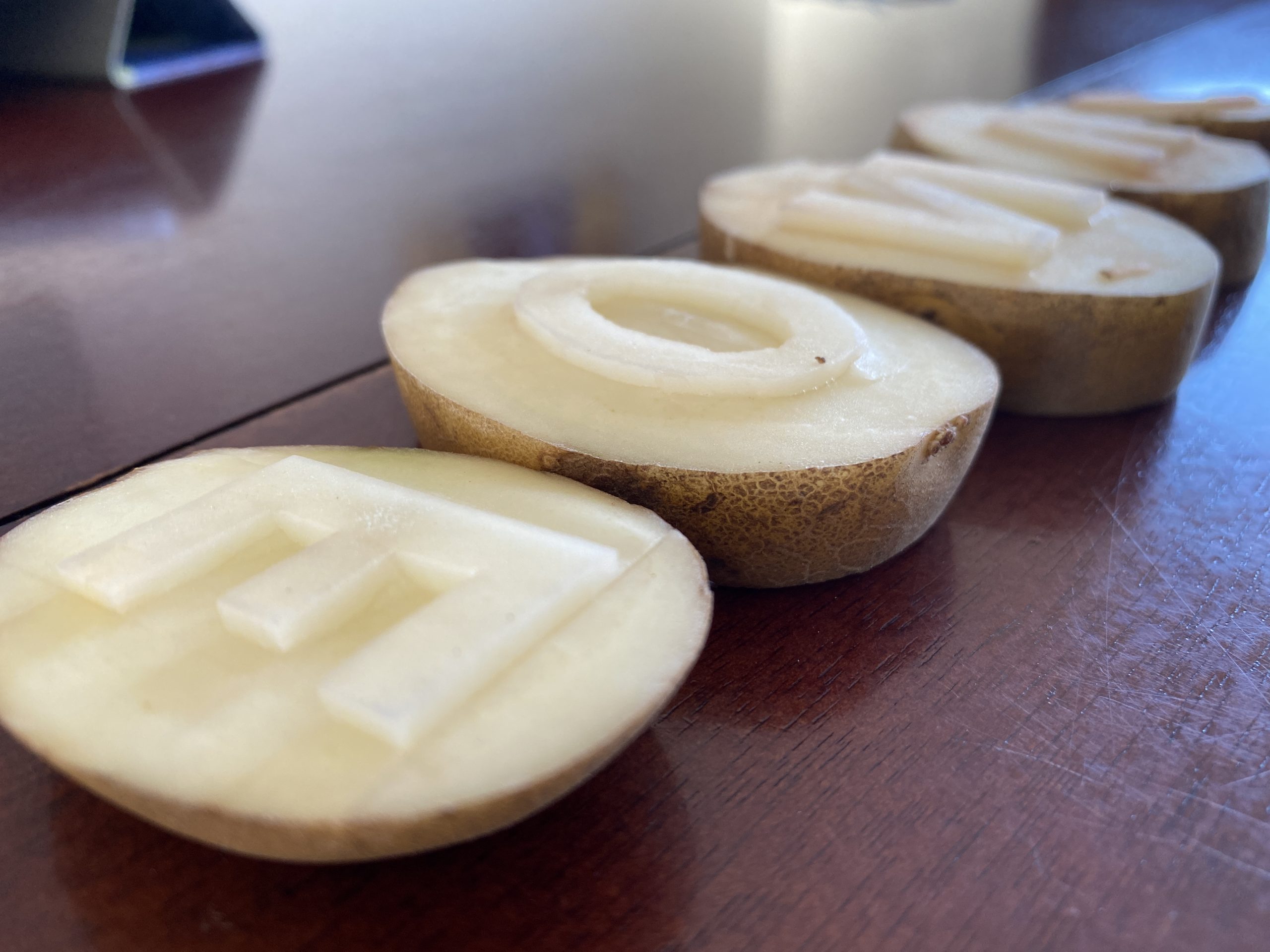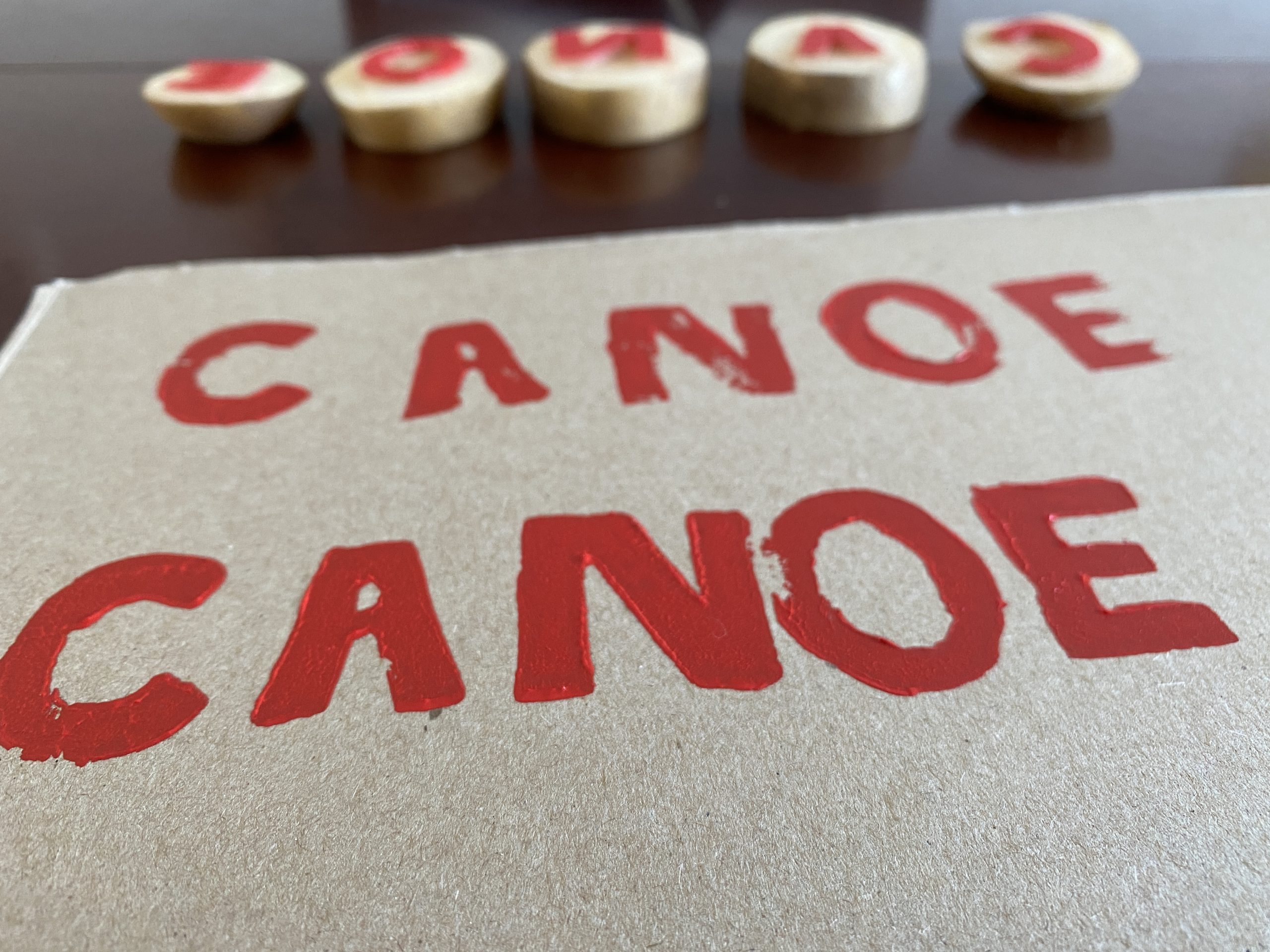


I chose to carve out the word canoe because at this time of the year, in this particular year, I am longing for warmer weather and the recreational activities that come along with it. We own a red canoe and I think of it as a signal of summer and leisure.
This was MUCH harder than I anticipated. Listening to the podcast on the printed book by Ben Harris(2018), he discusses the process of monks having to scribe copies of books day after day, specifically using the word “drudgery”. Scribing like this would have no doubt been fatally mundane, which makes me all the more grateful that we have the mechanized press. I had set aside about 30 minutes to carve my potato letters but found myself still staring at my five potato cross-sections ten minutes into it. I took a marker and outlined a rough idea of the letters, and then had to flip a few of the letters over because I had forgotten to mirror them. Easily the hardest part was the carving of the letters. For some reason I made them quite shallow, maybe a few millimetres or so, and that took quite a lot of time to work around and inside the letters. One advantage of having such a thin depth is that I could see the knife through the flesh which made it easier to know when I had met a vertical cut line. Ultimately this took me about an hour, and my back was fatigued in the end from being so absorbed in the task. While that seems like a lot of work to print a single word, I could theoretically print this word over and over for hours at a time now that my stamps have been made. I could mount these on a rod and align them perfectly, and I’d be able to print this word until the potato started to degrade. If I were to do this again I would find a way to secure them to each other rather than hand pressing each letter.
The letters E, A, and N were actually quite straight forward. Straight lines were a breeze with a sharp, thin paring knife. The curved letters like O and C were difficult, and if I’m being honest I look at my work and am a bit embarrassed. Not thrilled with how they turned out.
In sum, this was not an easy task but pales in comparison with the conditions of the early press. My home is heated, with bright artificial lights, and I can use materials that are safe and non-toxic. I used an oil paint that was actually hard to get off of my hands. While I was washing up afterward, trying to get the paint off, I was reminded of the permanence of the paint, which brought me back to Ong. In Orality and Literacy (2002), he discusses how words are grounded in oral speech, but that writing grounds them forever. I can shout the word “CANOE” out into the air and it dies as soon as my vocal cords stop vibrating. Now I can leave it there and be reminded of it every time I look at it – and every time I look at it I can be reminded of what I am looking forward to.
References
Harris, B. (2018, February 4). The printed Book: Opening the floodgates of knowledge. [Audio podcast episode]. In How it Began: A History of the Modern World. Retrieved February 01, 2021, from https://howitbegan.com/episodes/the-printed-book/
Ong, W. J. (2002). Orality and Literacy: The Technologizing of the Word. Routledge. https://monoskop.org/images/d/db/Ong_Walter_J_Orality_and_Literacy_2nd_ed.pdf
